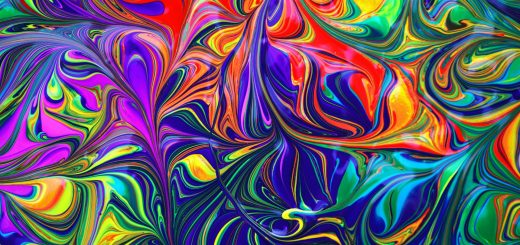Face Reading in History: Famous Practitioners

Hey there, amazing readers! 🖐️ Just a quick note: yes, we know there are a lot of ads here. Trust us, we get it—it’s not the prettiest look, but they help us keep this blog alive and kicking. Those pesky little ads cover the costs of all the behind-the-scenes magic, from hosting and tech stuff to creating content we hope you’ll love.
We’re committed to delivering quality posts, and your support (even just sticking around despite the ads) means everything to us. So, bear with us, and thanks for helping us keep the good vibes rolling. Now, on to the fun stuff! 😉
TRANSLATE BUTTON AT THE END OF THE ARTICLE
Face Reading: An Ancient Practice
Face reading, also known as physiognomy, is an ancient practice that involves analyzing facial features to gain insight into a person’s character, personality traits, and even destiny.
This practice dates back thousands of years and has been a prevalent method of understanding individuals in various cultures and civilizations.
The face is considered a mirror of the soul, reflecting one’s inner thoughts and emotions.
Through subtle details such as the shape of the eyes, the curve of the lips, or the contours of the face, face readers believe they can uncover deep truths about a person.
Historically, face reading was utilized not only for personal insight but also for making important decisions, such as choosing leaders, forming alliances, or even predicting future events.
The practice was deeply intertwined with astrology, phrenology, and other forms of divination.
Despite facing skepticism and criticism over the years, face reading has persisted as a tool for understanding human nature and behavior.
Historical Significance of Face Reading
Face reading has played a significant role in various historical contexts, shaping the way people perceived themselves and others.
In ancient China, face reading was an essential part of traditional Chinese medicine and was used to diagnose illnesses and assess a person’s overall health.
The Chinese believed that the face was a reflection of the body’s internal organs and systems, making it a crucial diagnostic tool.
Similarly, in ancient Greece, face reading was closely tied to the teachings of renowned philosophers such as Aristotle, who believed that facial features could reveal a person’s temperament and moral character.
Face reading was also popular among European royalty and aristocracy, who consulted court physiognomists to assess the character of potential suitors, allies, or enemies.
Throughout history, face reading has been a tool for both personal introspection and societal decision-making, influencing everything from personal relationships to political alliances.
While its popularity has fluctuated over time, face reading remains a fascinating practice that continues to intrigue people around the world.
Notable Figures in Face Reading History
Over the centuries, several notable figures have made significant contributions to the field of face reading, shaping the practice and its interpretations.
These individuals have played a crucial role in popularizing face reading and expanding its influence across different cultures and societies.
From ancient philosophers to modern psychologists, these practitioners have left a lasting impact on the way we understand facial features and their meanings.
Aristotle: The Father of Physiognomy
Aristotle, the famous Greek philosopher, is often credited as the father of physiognomy, the practice of reading facial features to determine a person’s character.
Aristotle believed that certain physical traits were indicative of specific personality traits, such as a broad forehead signifying intelligence or a sharp nose indicating courage.
His teachings on physiognomy influenced many ancient scholars and set the foundation for future developments in the field.
Paracelsus and His Contributions
Paracelsus, a renowned physician and alchemist of the Renaissance era, also made significant contributions to the field of face reading.
Paracelsus believed that the face was a reflection of the body’s internal balance and that by analyzing facial features, one could diagnose and treat various illnesses.
His holistic approach to medicine incorporated elements of astrology, alchemy, and face reading, making him a pioneer in the field of alternative medicine.
Johann Kaspar Lavater: A Face Reading Pioneer
Johann Kaspar Lavater, an 18th-century Swiss poet and theologian, is considered one of the pioneers of modern face reading.
Lavater’s work, "Physiognomy: The Art of Reading Faces," became a seminal text on the subject and popularized the practice across Europe.
Lavater believed that facial features were a window into a person’s soul and that through careful observation and analysis, one could uncover hidden truths about an individual’s character.
Insights from Cesare Lombroso
Cesare Lombroso, an Italian criminologist and physician, applied the principles of face reading to the study of criminal behavior.
Lombroso believed that certain facial features were associated with criminal tendencies, such as a low forehead or prominent jaw.
His work on "criminal anthropology" sparked controversy but also paved the way for the study of facial features in relation to psychology and behavior.
Modern Applications of Face Reading
In modern times, face reading has found new applications in various fields, including psychology, marketing, and even technology.
Facial recognition software uses algorithms to analyze facial features for security purposes, while psychologists use face reading techniques to assess emotional states and diagnose mental health conditions.
Face reading has also become popular in self-help and personal development circles, where individuals seek to understand themselves better through analyzing their own facial features.
Impact of Face Reading in Psychology
The practice of face reading has had a significant impact on the field of psychology, shaping the way psychologists understand human behavior and personality.
While some psychologists remain skeptical of face reading as a legitimate diagnostic tool, others see value in analyzing facial features as part of a comprehensive assessment.
The study of microexpressions, subtle facial movements that reveal emotions, has become a valuable tool in understanding nonverbal communication and interpersonal dynamics.
Controversies Surrounding Face Reading
Despite its long history and widespread practice, face reading has not been without its controversies.
Critics argue that face reading is a pseudoscience with no empirical evidence to support its claims.
Skeptics point to the subjective nature of face reading and its potential for bias and misinterpretation.
The practice has faced scrutiny for its potential to perpetuate stereotypes and discrimination based on physical appearance.
Legitimacy and Criticisms of the Practice
The legitimacy of face reading as a diagnostic tool remains a point of contention among scholars and practitioners.
While some believe in the power of facial features to reveal insights into a person’s character, others dismiss face reading as a form of fortune-telling or pseudoscience.
Critics argue that the practice lacks empirical evidence and relies too heavily on subjective interpretation.
Despite these criticisms, face reading continues to be a popular practice in many cultures and societies.
Face Reading: A Tool for Personal Insight
For many people, face reading remains a fascinating tool for self-discovery and personal insight.
By analyzing their own facial features, individuals hope to gain a deeper understanding of themselves and their inner motivations.
Face reading can offer a unique perspective on one’s strengths, weaknesses, and potential areas for growth.
While not a definitive science, face reading provides a lens through which individuals can explore their identity and gain new insights into their personal journey.
Conclusion
Face reading, an ancient practice with roots in various cultures and civilizations, has played a significant role in shaping the way we understand human nature and behavior.
From the teachings of Aristotle to the modern applications in psychology and technology, face reading continues to intrigue and captivate people around the world.
While facing skepticism and controversy, face reading remains a valuable tool for personal insight and self-discovery.
As we navigate the complexities of the human experience, face reading offers a unique perspective on our inner selves and the mysteries that lie beneath the surface of our faces.

The Enlightenment Journey is a remarkable collection of writings authored by a distinguished group of experts in the fields of spirituality, new age, and esoteric knowledge.
This anthology features a diverse assembly of well-experienced authors who bring their profound insights and credible perspectives to the forefront.
Each contributor possesses a wealth of knowledge and wisdom, making them authorities in their respective domains.
Together, they offer readers a transformative journey into the realms of spiritual growth, self-discovery, and esoteric enlightenment.
The Enlightenment Journey is a testament to the collective expertise of these luminaries, providing readers with a rich tapestry of ideas and information to illuminate their spiritual path.
Our Diverse Expertise 🌟
While our primary focus is on spirituality and esotericism, we are equally passionate about exploring a wide range of other topics and niches 🌍📚. Our experienced team is dedicated to delivering high-quality, informative content across various subjects ✨.
To ensure we provide the most accurate and valuable insights, we collaborate with trusted experts in their respective domains 🧑🏫👩🏫. This allows us to offer well-rounded perspectives and knowledge to our readers.
Our blog originally focused on spirituality and metaphysics, but we’ve since expanded to cover a wide range of niches. Don’t worry—we continue to publish a lot of articles on spirituality! Frequently visit our blog to explore our diverse content and stay tuned for more insightful reads.






